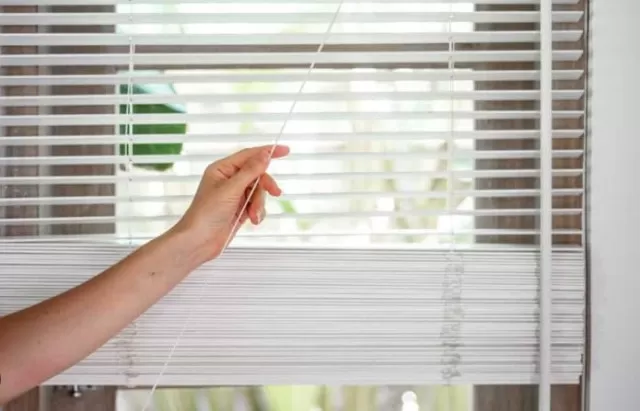5 Tips Cleaning Fabric Blinds. Fabric blinds come in different styles, including those with vertical or horizontal plastic slats and woven translucent or room-darkening fabrics.
Although they feature dust and moisture-resistant coatings, fabric blinds require regular cleaning to maintain their appearance. Since these blinds are more delicate than other types, it’s important to use the right cleaning supplies and tools. This guide provides Tips and Tricks to help homeowners effectively clean their fabric blinds.
How Often Should You Clean Your Fabric Blinds?

To maintain the cleanliness of fabric blinds, it is recommended to dust them weekly to prevent dirt from accumulating.
However, in reality, this may not always be feasible. At a minimum, dusting the blinds monthly is recommended, and a thorough cleaning should be performed at least twice a year.
If the blinds are located in areas such as the kitchen, where grease can accumulate, or the bathroom, where hairspray can leave residue, it is recommended to do a more thorough cleaning on a seasonal basis.
How to Prepare Fabric Blinds for Cleaning

Before starting to clean fabric blinds, it’s important to close them properly to access the entire surface.
For horizontal blinds, lower them fully and tilt the slats to the closed position. For vertical blinds, draw them to one side and rotate the slats to expose the fabric surface.
This will ensure that you can clean every part of the blinds effectively.
Cleaning Fabric Blinds – How to Vacuum Fabric Blinds to Remove Dust

Rewritten Text: To effectively remove dust from fabric blinds, use a vacuum with a hose and upholstery brush attachment.
Alternatively, you can wipe down each slat with a microfiber cloth. For horizontal fabric blinds, stabilize them by holding the bottom with one hand and then gently run the upholstery brush over each slat or section, starting from the top.
Do not apply excessive pressure to avoid damaging the blinds. Vacuum the reverse side if the blinds are one solid piece of fabric.
When cleaning vertical fabric blinds, hold the bottom of each slat and vacuum down from the top to prevent the slats from unhooking. Pay extra attention to the upper hardware that may catch and hold dust.
This is also a great opportunity to vacuum the window sills and wash the inside of the windows.
Inspecting Fabric Blinds for Stains
Inspect fabric blinds for any stains or spots after dusting them off. Common stains may be from food splatters, sticky hands, or insect droppings.
Preparing a Cleaning Solution for Fabric Blinds

Start by preparing a cleaning solution with the following steps:.
Fill a bowl with two cups of lukewarm water.
Add a few drops of dishwashing liquid (no more than 1/4 teaspoon). Agitate the water with your fingers or a spoon to disperse the dishwashing liquid evenly.
Spot Cleaning Stains on Fabric Blinds
Cleaning Fabric Blinds. To spot clean stains on fabric blinds, start by dipping a microfiber cloth in a cleaning solution made of lukewarm water and a few drops of dishwashing liquid.
Wring out the cloth until it’s no longer dripping, and place one hand behind the area to be cleaned to support the blind and prevent damage.
Gently dab the stain with the dampened cloth, being careful not to scrub the fabric, which can cause tearing or abrasions.
For tough stains, dip the cloth in dry baking soda and use it to gently rub the area. The baking soda acts as a gentle abrasive to help remove the stain.
Once the stain is removed, dip a clean microfiber cloth in plain water and wring it out until it’s just damp.
Use the damp cloth to rinse the area and wipe away any soapy residue to prevent discoloration.
*The information is for reference only.